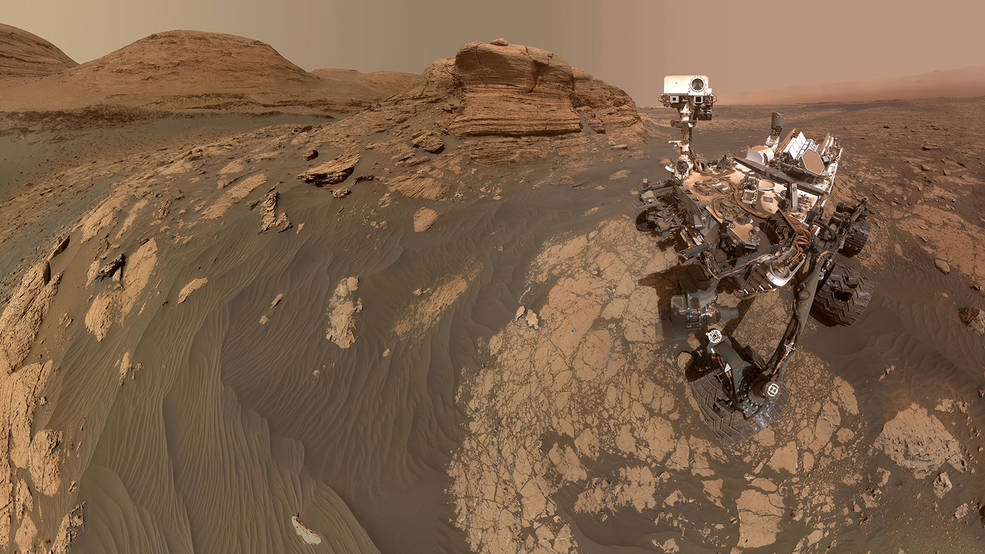According to the study, the Great Mars Lake of prehistoric times turns out to be just a collection of small ponds
NASA rover Curiosity on Mars. (Photo: NASA / JPL-Caltech / MSSS)
Finds by the Mars rover Curiosity gave researchers hope for a huge Mars lake in the Gale crater – and thus for traces of life. But it was probably just a pond landscape.
Just a few days ago, NASA had destroyed the hope, fueled by Italian researchers, that there could be large amounts of water under the south polar cap of Mars. The hoped-for Mars lakes could therefore consist of clay instead of water. Now a study by the University of Hong Kong has cast doubt on another possible water finding site – and thus also on traces of life to be found there.
Contents
Weathered by wind, not water
The in the journal Science Advances published study deals with traces of weathering in the Gale crater on Mars, which, according to the researchers, were created inside by the action of wind (aeolian) and in the open air instead of under water (sub-arian). It was originally assumed that the 154-kilometer-wide crater in which the Mars rover Curiosity has been moving for nine years could have housed a huge lake 3.7 billion years ago.
In 2014, NASA declared that the lake was big enough to last for millions of years. This is a prerequisite for having enough time for life to arise. The research team from Hong Kong, led by doctoral student Jiacheng Liu, interprets the data from the findings collected by Curiosity differently. The majority of the mudstone sediments were therefore not formed under the influence of water.
Gale crater: Many small ponds instead of a large lake
Instead, it is more like deposits that got into the crater as a result of volcanic activity or wind. Acid rain then changed the deposits for hundreds of millions of years. Opposite space.com said Joe Michalski, co-author of the study, that the study suggests that the Gale crater may have contained many smaller ponds rather than one large lake. However, these would probably have survived a maximum of a few tens of thousands of years. The chance that life could have developed there is correspondingly small.
Now the NASA rover Perseverance could bring further light into the darkness. Because he’s on the move in the 45-kilometer-wide Jezero crater to take samples there. In any case, Michalski assumes that a larger lake “definitely” existed there. He suspects that the sediments are different there. But this lake also disappeared again after a certain time.



